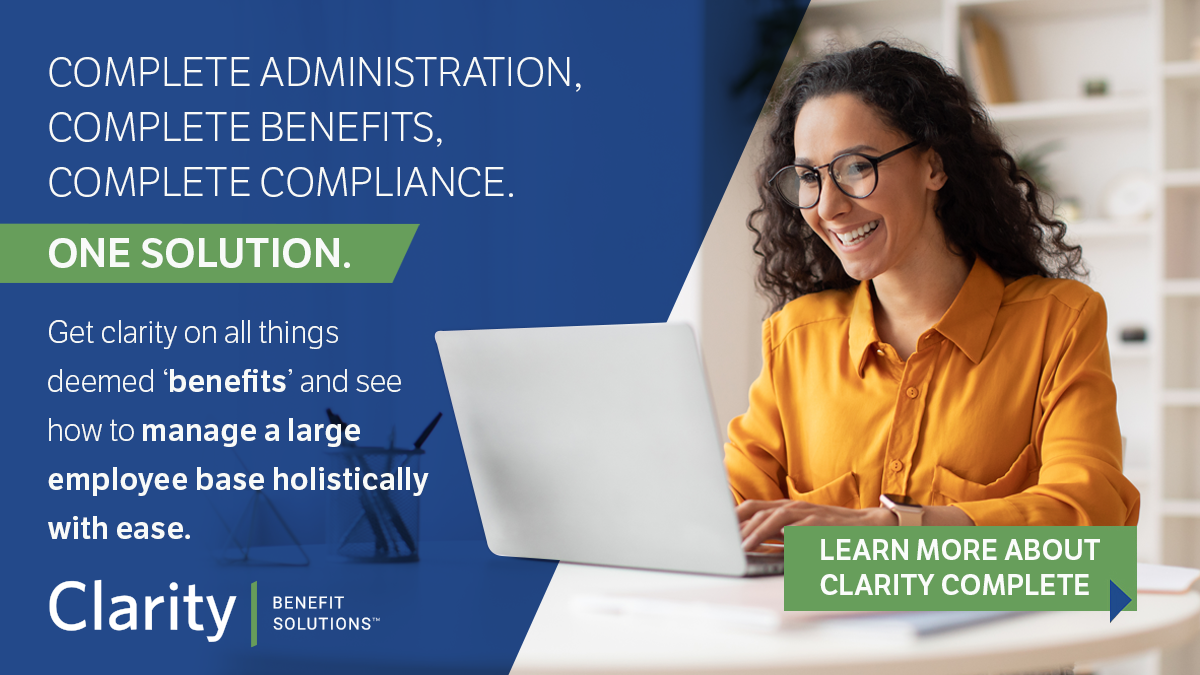
Many successful organizations have multigenerational workforces; each generation brings a unique set of strengths that the other generations can learn from and collaborate with.
With people delaying retirement and working until later in their lives, organizations are now seeing a mix of four generations: Gen Z, Millennials, Gen X, and Boomers. Employee Benefit Adviser predicts that in 2030, the workforce will be distributed as follows:
While having different viewpoints, strengths, and skills among your workforce is a distinct advantage, it also brings a unique set of challenges. With the different generations having such different priorities and needs, how can you offer a employee benefits package for different generations that keeps everyone happy?
The short answer is, you can’t. The longer answer is that you can’t in a single, rigid benefits plan. Offering flexible, personalized multigenerational workforce benefits can help you meet the diverse needs of all your employees, no matter what generation they belong to.
Understanding the Needs of the Different Generations
To properly craft a benefit plan that has options for different generations, it’s important to understand the needs of the different generations. Each generation experienced different life events that shaped their values. While there very well may be exceptions in your organization, typically each generation values the following:
- Boomers. As the older generation in the workforce, Boomers are typically already established financially and own a home or other asset. Most of their children are adults who no longer live in the home, so Boomers tend to value benefits that are less geared towards family and more towards setting them up for a comfortable future.
- Gen X. This generation finds themselves in unique situations. Many have children still living at home, yet many are also tasked with caring for aging parents. Therefore, this generation might need the most out of benefits. Gen X tends to be the most overlooked generation when it comes to benefit plans, so it’s important to pay them mind.
- Millennials. A common misconception is that millennials only value “fun” and frivolous experiences. That’s not necessarily the case. Millennials are now at the age where they are getting married, buying houses, and starting families -- albeit at a later age than the previous generations. The delay here is due in part to the significant amount of student debt this generation carries.
What matters most to Millennials is flexibility. In fact, a survey by Payscale found that 34% of Millennials have quit a job because of lack of flexibility, while 24% are actively seeking a new job for the same reason. - Gen Z. Many people mistakenly lump Gen Z with Millennials, but there are some significant differences between these generations. The biggest is Gen Z’s prioritization of fulfilling their passion, taking pride in their work, and seeking personal fulfillment from their job.
Crafting a Benefits Offering to Fit Diverse Needs
With those values and needs in mind, you can better understand which benefits would be the most valuable to the different generations:
- Boomers: Given their tenure in the workforce and current life position, Boomers are more apt to value the “traditional” benefits like salary advancements, health insurance, and retirement savings plans. However, newer benefits like flexible working options will allow this generation to better care for their aging parents.
- Gen X: Given that Gen X is juggling multiple responsibilities, benefits that promote work life balance are key. Flexible work arrangements, health insurance that covers family members, an employer-matched 401(k), and life insurance are most valuable to this generation.
- Millennials: Despite the “pool table and beer fridge” persona, Millennials value traditional benefits like employer-matched 401(k)s and health insurance to help them achieve financial stability. On the same token, student loan repayment programs are sure to appeal to Millennials. Since flexibility is a top priority, telecommuting or unlimited PTO policies are also very attractive to Millennials.
- Gen Z: Since this generation is also working to get out of student debt, loan repayment programs are valuable here as well. To help Gen Z find fulfillment in the workplace, you should also consider learning and development benefits. Since their person selves are so closely tied with the workplace, offering better access to mental health resources is also important to Gen Z.
Putting Plans into Action
While a simple solution would be to offer different benefits packages to different generations, it’s not so easy. While you can offer different packages, it can’t be done in a way that discriminates based on age as per the Equal Opportunity Commission.
So how can employers put their plans into action? Offer as many options as possible to your whole workforce and allow them to select the benefits solutions that best suit their needs. If you are unsure where to start, look at what the generations have in common. For example, value affordable, quality health insurance and 401(k) plans. From there, have conversations with employees from all generations and offer options based on the feedback you receive.
Catering your benefits to meet the diverse needs of a multigenerational workforce can be a challenge; but the reward is far worth it.
Download a PDF of this blog.
Sources:
https://www.forbes.com/sites/wesgay/2017/10/20/multigeneration-workforce/#d03a2e44bfd4
https://www.shrm.org/ResourcesAndTools/tools-and-samples/exreq/Pages/Details.aspx?Erid=1501
